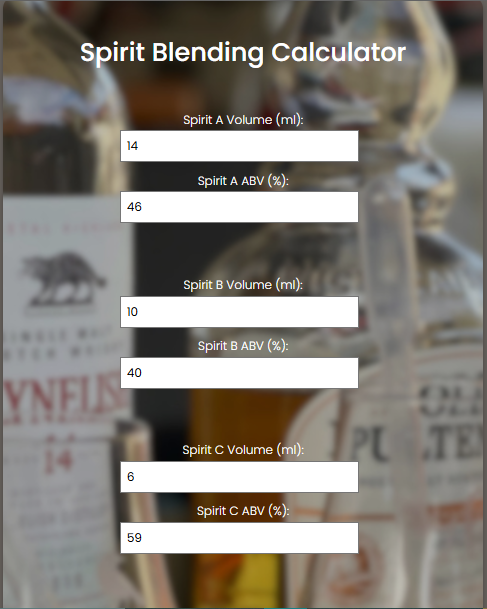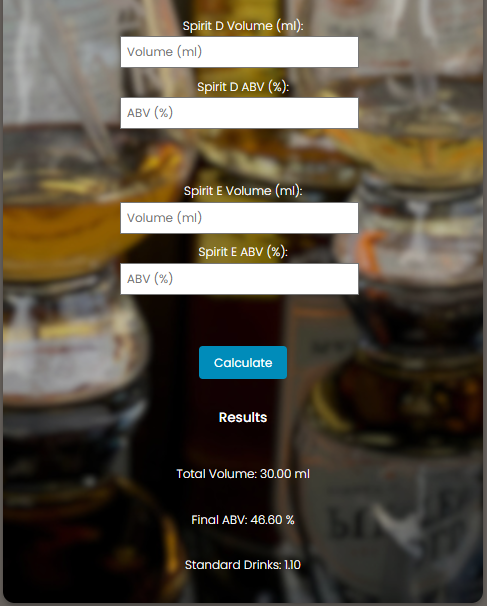Blending your own whisky at home
Playing around and blending your own whisky is a fun way to explore flavour profiles and how certain flavours interact with each other. If you are looking to blend your own spirits, the most important factor is precision and accuracy. The Glass Half Full Spirits Blending calculator helps to keep track and show the results of your spirit volumes, ABV % and standard drinks in your blend.
When blending spirits, there is certainly a method to the madness. As a general rule, if you think of the components of your blended spirit as components of a pyramid, you should be heading in the right direction. Start with a foundation spirit that works as a base, does a lot of the heavy lifting and is something that plays well with many flavours. Next layer is your supporting act, it’s not the main focus of flavour, but without a strong supporting act, the foundation won’t deliver enough on it’s own. Your tip of the pyramid is your accent flavour or seasoning spirit, something you use very little of in comparison to the other volumes, but adds a lovely seasoning or accent flavour to the rest of the blend. If you are playing around with blending, it is definitely a good idea to start with just 3 spirits. That way you can nail the basics before stepping up to bringing many more spirits to the dance.
Although the first pyramid diagram above focuses only on 3 components, the same rule can translate to a blend with many more components. If you were looking to blend with 4 different spirits, follow the pyramid principle, but just split up each level of the foundation, the support and the accent. In this case, the pyramid principle still applies for 4 spirits, with 2 of them stepping in as the foundation. You could do 5 spirits and split the supporting act into 2 as well, or even the seasoning spirit into 2, and so on and so forth. As an example of a blended whisky following this pyramid, we took Clynelish 14 as our foundation, Aberlour 12 as our supporting act and Old Pulteney Cask Strength as the accent flavour. The respective volumes were 14ml, 10ml and 6ml.
When using the blending calculator, it will calculate our final volume, the final ABV% of the blend and the standard drinks. For our blended whisky example, this is how it would look in the calculator:
Throughout your blending process, you can now accurately keep track of the alcohol content of the blend. The calculator has fields for up to 5 spirits at a time.
One of the best parts (or most frustrating parts) of blending is that the theory doesn’t always line up with the practical side of things. There is a certain sense of magic to it! Sometimes the only way to get things right is to continue experimenting, continue working on variations and continue to taste your work. So go out there and get blending with our calculator!




